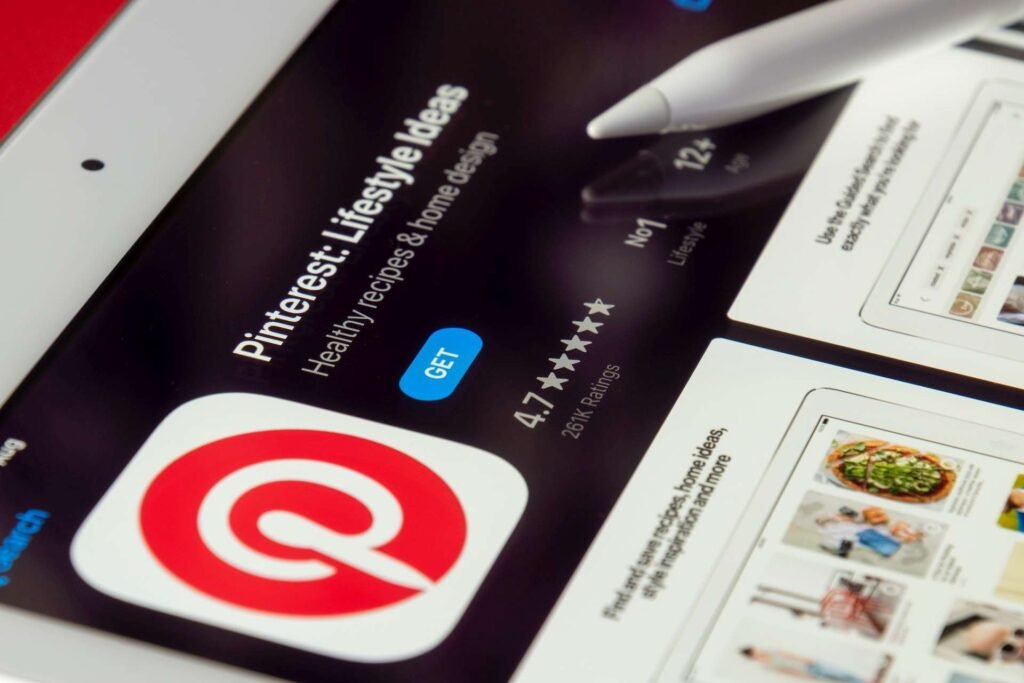The biggest companies on the market today are all the perfect models when it comes to growth hacking. They have all used creative growth hacking tactics to grow their business and keep their customers around. Here are five examples of growth hacking to inspire you to get creative and take your business to the next level!

1. Pinterest’s Exclusivity Hack
Pinterest is a social network where you can share and save images that you like This platform is a great way to get inspiration for things like home decor, fashion, weddings, organization, self-care, etc. But, to see the endless inspiration, you have to sign up first.
On their homepage, you can see cool teaser photos to give the user an idea of what’s beyond the sign-in page. This immediately makes the potential user eager to hurry up and get signed in to join the platform.
Pinterest also does a great job of keeping its users engaged for long periods of time. They do this by literally making the site appear endless. You can scroll for hours and hours without running out of anything to look at. Though it appears effortless, Pinterest is such a well-known and highly reviewed platform because they got creative and determined and started implementing growth hacking strategies to their business model to increase their audience and keep them around for a long time. Genius!
2. Uber And Lyft’s IRL Strategies
Uber single-handedly changed the game for car transportation in the 21st century. With the click of a button, you can have a car come to pick you up in your exact location and take you to wherever you want for a super reasonable price. The main reason Uber generated so much interest once it first hit the marketplace it was because the investors and business owners in the San Francisco area were sold on this project after they were the first to experience what it was like to get around town in an Uber for a day. The owners of Uber went straight to their target audience in real life and gave them the experience that would generate stable income and keep customers coming back. And it worked!
Not too long after Uber, Lyft became wildly popular and quickly Uber’s number one competitor in the US. This is because Lyft took a problem, and used a growth hacking strategy to not just fix it, but come up with a way to make it even better. So, the issue was that people were having trouble finding their rides when they arrived, especially in busy places. To fix this, Lyft now sends out pink moustaches for all of their drivers to put on their dashboard windows so that the passengers can locate the cars easily. Plus, the fluorescent pink moustaches popping up in dashboard windows generated a lot of conversation on the streets for the company, thus attracting more and more users!

3. Instagram’s Cross-Posting Hack
If you think back to the beginning of Instagram. why did you join it in the first place? Probably because you saw one of your Facebook friends post a photo on their timeline using the Instagram App. And with a cool filter that you didn’t even know existed. Yep, me too. That’s because Instagram utilises the ability to share your photo on all other platforms with just one easy click. Then, our news feeds became flooded with Instagram photos which immediately skyrocketed the number of users.
This cross-posting growth hack strategy alone escalated the number of Instagram users. This is by 500% in just one year.4. Netflix’s Expansion PlanDid you know that Netflix actually started out as a DVD rental company back in 1997? Poor Blockbuster had no idea what was coming. It wasn’t until Netflix changed their business model and adopted growth hacking strategies did it truly took off. Once the idea of online video streaming came to the surface.
Netflix then split their company in two. One would be for DVDs and online streaming. And the other would be to fund the expansion project. From there, Netflix began using all sorts of growth hacking techniques that have now earned them over 117 million streaming subscribers. The two most important strategies they implemented were first. Collaborating with bigger brands to attract a larger audience by acquiring the ability to stream popular TV shows with cult followings.
The second way was that they kept their subscribers around by tailoring the content on the homepage to each subscriber’s liking. Each Netflix account has a different front page, where you can scroll through your favourite categories, things you may like, and of course, all of the new releases and audience favourites. A genius way to not only acquire the taste of their subscribers but also keep them binge-watching their weekends away!
5. Groupon’s FOMO Strategy
Groupon makes you gather a certain amount of people to get the deal you have your eye on. So, in order to have a chance to get the discount, you have to share it on a social media platform. But, everyone has the potential to miss out because the deal will eventually expire. The perfect anxiety-inducing, yet effective way to use FOMO to target a larger audience and keep them coming back for more!
Most strategies having to do with referring a friend, access to exclusive prizes and content or social media sharing is always bound to attract some sort of new following. But don’t be afraid to get creative when it comes to growth hacking. Growth hacking not only creates a more loyal following but will take your business to the next level. All of the companies listed above got super creative and that’s why their businesses are successful today. Go get hacking!
